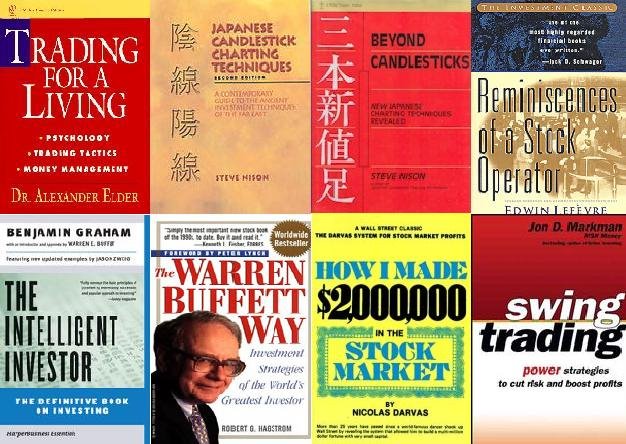Some may think I am crazy. Some may think I am boastful.
But since I have launched this blog, allow me to share my observation and experience in KLSE.

Consider this: Stock market in general moves in cycles.
We have many theories revolving around this concept.
Buddhism believes in recarnation, that's a cycle.
The Economic Cycle theory states that the economy moves in a cycle.
The Dow Theory (one of the oldest theory still applicable) states that the market has three phases - accummulation phase, public participation phase and distribution phase. Sounds like a cycle to me.
The Elliott Wave revolves around cycles.
Everything is a cycle.
OK, let's look at charts. Enough theory for now :). Below is the KLCI chart from 1990 to 2007 (Friday). Chart data courtesy of Mr Lim of www.bizfun.cc
From the charts, what can we observe?
Now if you have said, Cycles, no prize for guessing it right :P
Now, let's zoom in to the more recent developments.
What do you see again?
Yeap, cycles.
Perhaps, the zoom is insufficient, indulge me, look at another zoom.
What do you see?
One complete small cycle.
Question: So from our observation, we concluded that stock market indeed move in cycles. So how to we profit from it?
Question: Why is this post titled: Why I say ROI 20% per annum is no big deal.
Question: Why does every Tom, Dick and Harry say, Buy Low, Sell High
(Or, in Ben's terms, Buy Sheep, Sell Deer, hahaha)

Hmm, so you must be thinking, "Ok, so your point is that stock market moves in cycle and if we want ROI 20% pa, we should buy low sell high. Big deal. How the heck are you going to do it? Can you actually catch the bottom and the peak?"
If so, then allow me to answer you, I cannot pick the exact bottom nor the exact high.
However, let me ask you another question, (you know what they say, one question leads to another :) ), Do you seriously need to pick the exact bottom or the exact high to achieve ROI 20% per annum? Note 20% pa. Not 30% pa. Not 50% pa. Not 100% pa.

To traders, this is insufficient. We ll cover some trader's techniques in the future.
To investors, 20% ROI is a heaven sent gift! The banks are not going to give you an FD rate of 20% pa. Neither does any stock issuing a Dividend Yield of 20%.
Of course, now that I have your attention, and possibly your belief that ROI 20% is possible, and its no big deal, you must be thinking, So how do you identify the cycle?

Well, this is the fun part. Now that the curiousity has been aroused, I m going to leave you with that thought. Hahaha. Curiousity may have killed the cat. But as Ben say, Satisfaction will bring it back. So, imagine if you solve the riddle all by yourself. Imagine the satisfaction :)
Otherwise, worry not, stay with us at Fusion Trader.
One day, you know what I mean :)



7 comments:
Thank you for your article. I enjoy reading it & am looking forward to the next episode!
Glad you enjoyed it.
Welcome and please enjoy your stay here :)
Does it's mean we can't keep stock for a long time? I still remember my friend that had bought UNISEM around rm15 and still keep it till now. If we say some stock as fundamental stock but its price in the future is unpredictable isn't it?
Sciencegto,
You could. But the calculations all depends on the duration of time. Let's say right now we compare, stocks which are bought 20 yrs ago and kept until now - most likely they are showing profits.
Reasons:
1) Those that gone bust will not be shown.
2) They are in nominal value, not real value. This means they are not adjusted for the decline in our puchasing power - e.g. 20 years ago, everything was "cheap", now everything is "expensive". Hence comparing that it was only RM1.00 when I bought it 20 years ago, is unfair - they are nominal and not real value.
If we are in 97-98 now, and we compare, stocks bought in 93-94 era, we see a huge decline. Reasons:
1) 93-94 was where valuations of stocks went crazily high, while 97-98 is where recession came.
So you see, those are mere calculations. And assuming you managed to use trend following type of trading, you would be able to beat the buy and hold strategy already. Reason:
1) You ride the trend at the beginning.
2) You jump off ship when trend ended.
3) You pick it up again at bottom.
Investing/Trading could not be as easy as buy and hold. I wish I could tell you that, but my experiences say otherwise. My apologies.
Your article here has good quality and actually pick our mind.
Average Return on investment of 20% p.a. compounding for 10 years not easy.
Even Warren Buffet achieve about 27% p.a. over 15 years.
No one would compound, or at least, I wouldn't recommend compounding.
In any case, our capital is small compared to Buffett's. We could achieve ROI 20% pa easily, whereas, Buffett could not - simply due to the sheer size of Buffett's funds.
Neiderhoff did 35% pa. though - best so far for huge fund size.
No choice investment is about compounding for example if we owe the bank at interest of 8% p.a. if not service the interest and capital will be compounding.
Hence long term investor must prepare his frame of mind on returns based on compound when evaluate investment.
Short term return of 50% is not big deal but sustainability is important.
Post a Comment